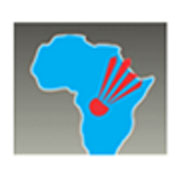From an early age I was active in sports. At the age of 11, I started training in volleyball and soccer, competing in school and regional amateur competitions. I was a child with separated parents, so volleyball and soccer kept me active in school while my mother worked.
𝗧𝗿𝘆𝘀𝘁 𝘄𝗶𝘁𝗵 𝗕𝗮𝗱𝗺𝗶𝗻𝘁𝗼𝗻
In 2004, I met a professor at college who was conducting badminton sessions. I joined as an intern and began to explore it by watching videos and networking with players from other states. By 2008, badminton had become my main activity.
I started understanding the culture behind the sport and perceived it as a potential tool for personal and social development.
In 2008 I started my badminton school in partnership with a club in Juiz de Fora. We started training and competitions. In 2013, I took the technical certification course conducted by the Brazilian Badminton Federation. I started a social project in Linhares, the neighborhood where I was born. We started the Badminton Sports Federation of Minas Gerais, since the state did not have an active federation. From then on, I moved away from the courts as a coach to assume the role of manager of the federation. However, I did my coaching levels, and I became Shuttle Time Tutor in 2020.
𝗠𝗲𝗺𝗼𝗿𝗮𝗯𝗹𝗲 𝗠𝗼𝗺𝗲𝗻𝘁𝘀
The state and national competitions allowed me to meet experienced coaches who helped me in my development. The training courses gave me access to international coaches. Working at the Pan American Games in Rio de Janeiro in 2007 was a unique experience. I was able to interact with several athletes from various countries. I am currently one of the coaches who participates in the High Performance Sports Course held by the Brazilian Olympic Committee through the Brazilian Association of Coaches. Through the course I was able to meet renowned coaches and scholars of the sport, as well as renowned coaches of badminton in Brazil.
𝗪𝗵𝗮𝘁 𝗕𝗮𝗱𝗺𝗶𝗻𝘁𝗼𝗻 𝗠𝗲𝗮𝗻𝘀
Badminton provides inclusive practice, enabling the emergence of new talent and providing children and young people access to new environments, new people and new cultures.
𝗪𝗵𝗮𝘁 𝗠𝗮𝗸𝗲𝘀 𝗕𝗮𝗱𝗺𝗶𝗻𝘁𝗼𝗻 𝗗𝗶𝗳𝗳𝗲𝗿𝗲𝗻𝘁
The ease of success during practice, the possibility of playing with people of different ages and gender and social backgrounds, the possibility of playing as a family. When played recreationally, the low risk of injury is another attraction.
The possibility of equality and inclusion through Para badminton. The dynamics of the game, its speed, cognitive requirement, the principles or fair play existing in the sport. All this makes badminton special.
𝗗𝗲𝘃𝗲𝗹𝗼𝗽𝗶𝗻𝗴 𝗕𝗮𝗱𝗺𝗶𝗻𝘁𝗼𝗻 𝗶𝗻 𝘁𝗵𝗲 𝗖𝗼𝗺𝗺𝘂𝗻𝗶𝘁𝘆
Initially the promotion was done through presentations in schools, clubs, squares, courts and public places. Developing the sport through the training of teachers, who are multipliers of knowledge, is a unique experience.
𝗜𝗺𝗽𝗮𝗰𝘁 𝗼𝗳 𝗦𝗵𝘂𝘁𝘁𝗹𝗲 𝗧𝗶𝗺𝗲
Shuttle Time has become a tool that allows teachers to transmit a methodology capable of introducing badminton effectively, with regard to motor, cognitive and social aspects. In addition, it allows students a positive experience with the sport, awakening them to the possibility of using it for systematic practice, and increasing the number of practitioners.
𝗟𝗲𝘀𝘀𝗼𝗻𝘀 𝗳𝗿𝗼𝗺 𝗦𝗵𝘂𝘁𝘁𝗹𝗲 𝗧𝗶𝗺𝗲
The biggest lesson I have learnt working with Shuttle Time is that our purpose is always related to people. Initially my purpose was to spread the word about badminton. After starting Shuttle Time as a tutor, I understood that the purpose is to impact people’s lives, give them a positive experience, develop physical, motor and cognitive abilities, as well as personal development.







